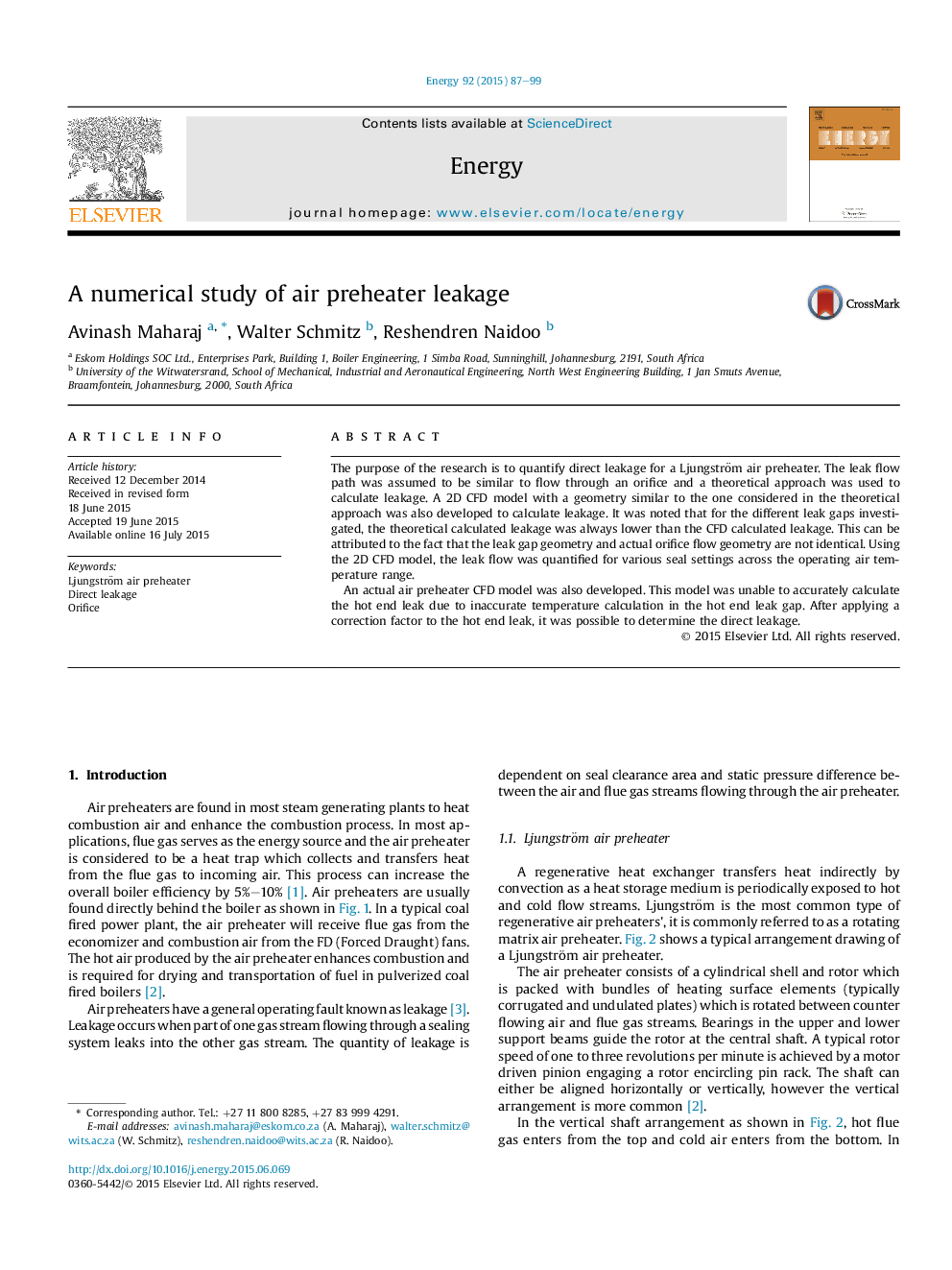| Article ID | Journal | Published Year | Pages | File Type |
|---|---|---|---|---|
| 1731394 | Energy | 2015 | 13 Pages |
•Air preheater direct leakage was quantified.•Theoretical calculation assumes the leak gap is similar to orifice flow.•2D CFD model results compared with theoretical calculation results.•Correction factor is applied to determine leak from an actual air preheater model.
The purpose of the research is to quantify direct leakage for a Ljungström air preheater. The leak flow path was assumed to be similar to flow through an orifice and a theoretical approach was used to calculate leakage. A 2D CFD model with a geometry similar to the one considered in the theoretical approach was also developed to calculate leakage. It was noted that for the different leak gaps investigated, the theoretical calculated leakage was always lower than the CFD calculated leakage. This can be attributed to the fact that the leak gap geometry and actual orifice flow geometry are not identical. Using the 2D CFD model, the leak flow was quantified for various seal settings across the operating air temperature range.An actual air preheater CFD model was also developed. This model was unable to accurately calculate the hot end leak due to inaccurate temperature calculation in the hot end leak gap. After applying a correction factor to the hot end leak, it was possible to determine the direct leakage.
